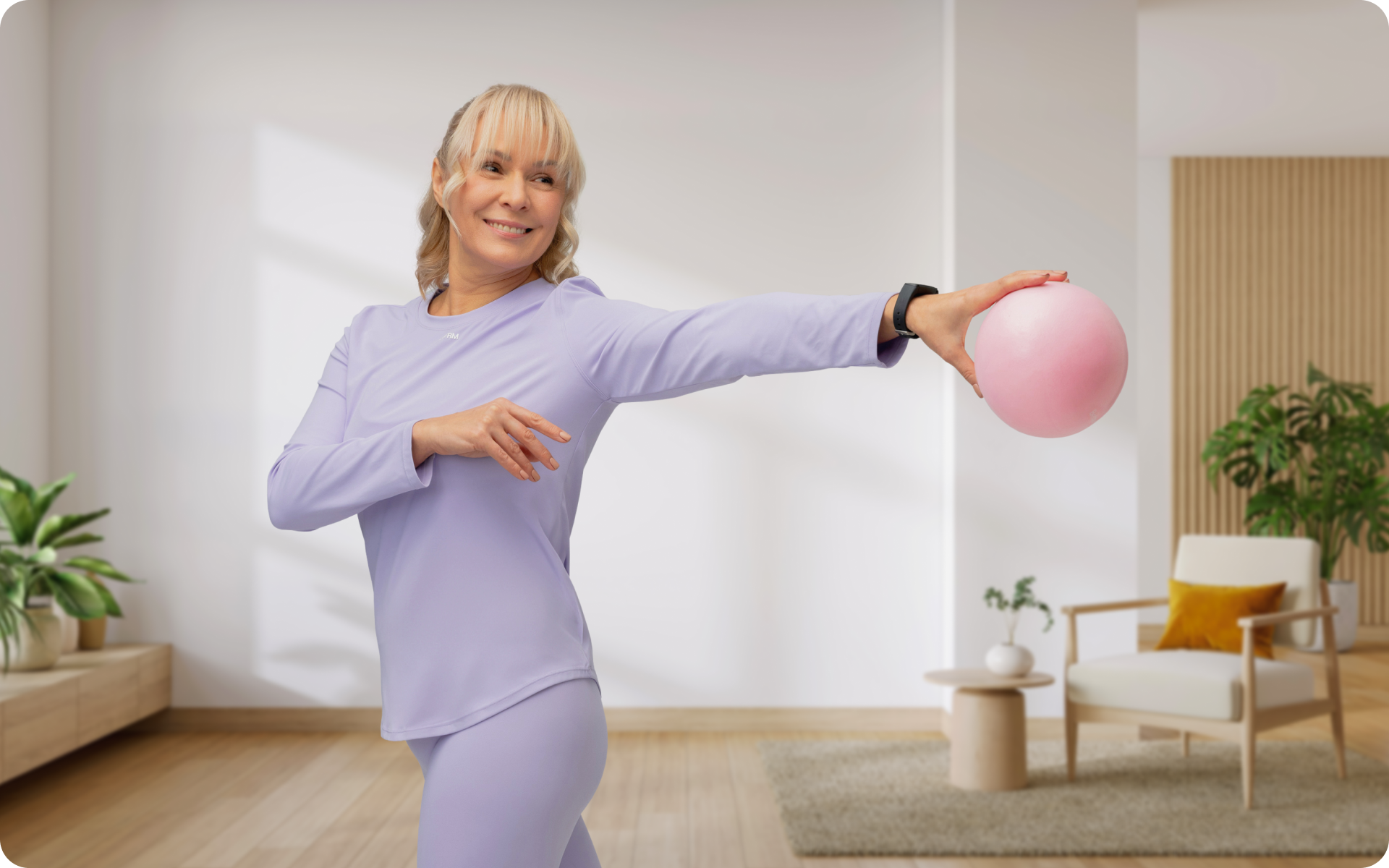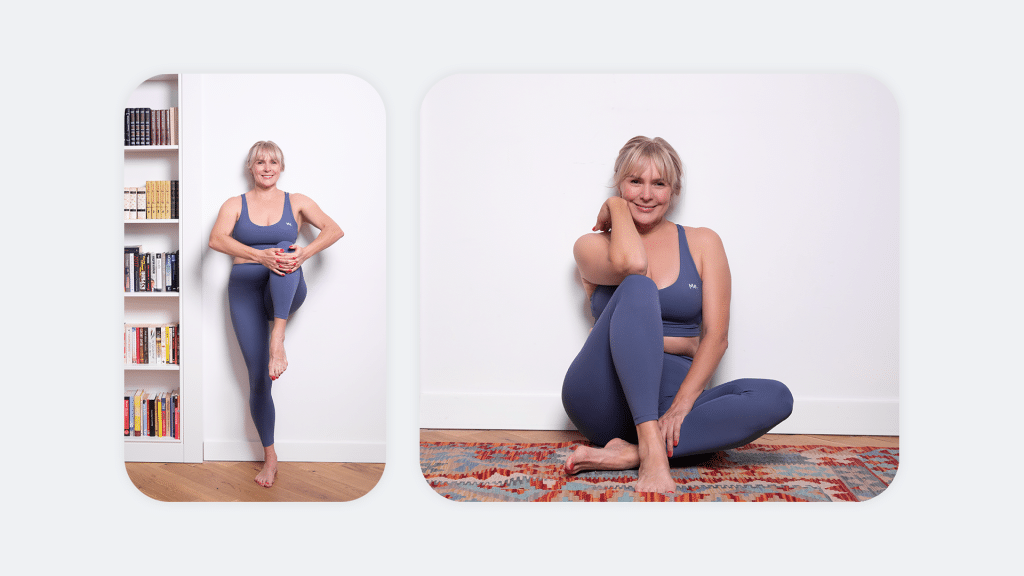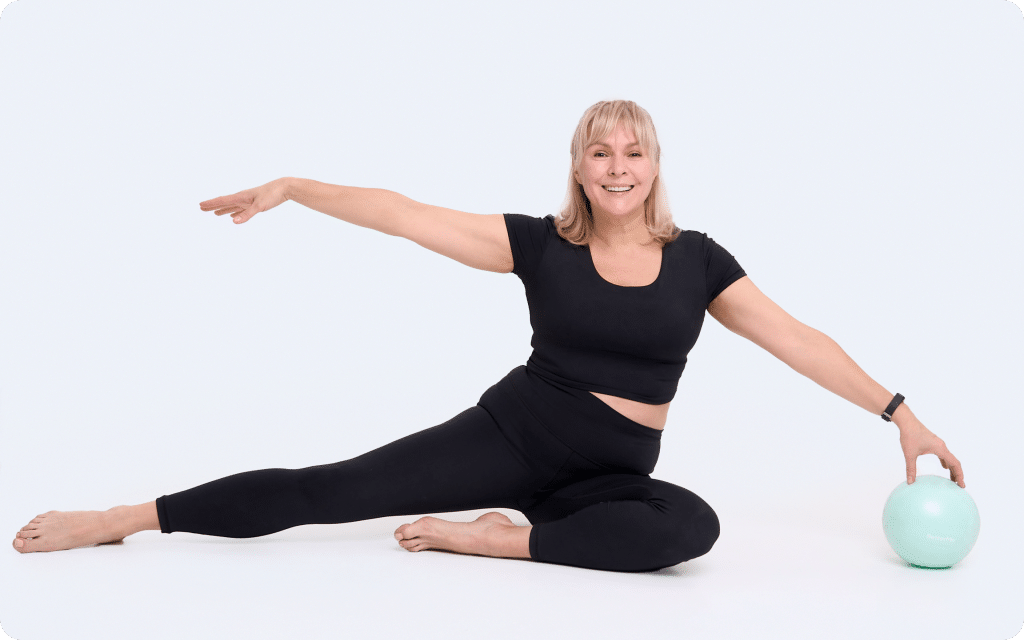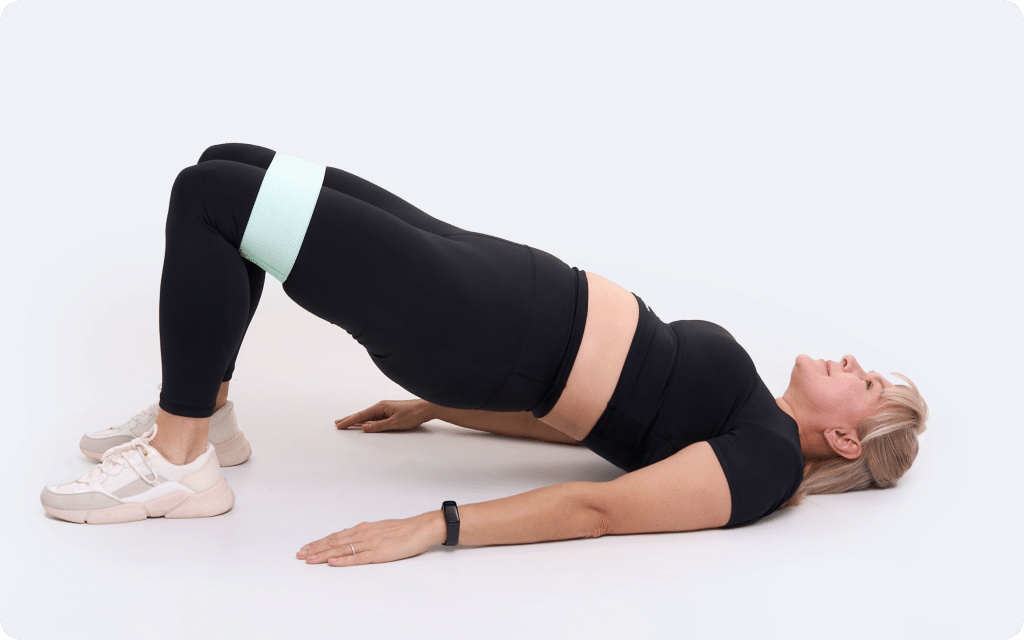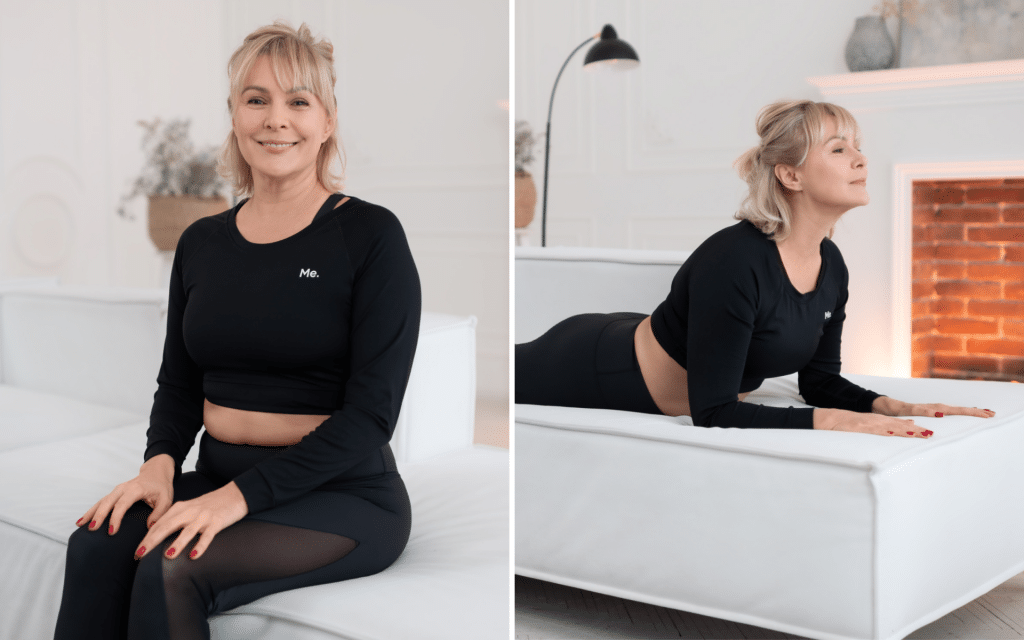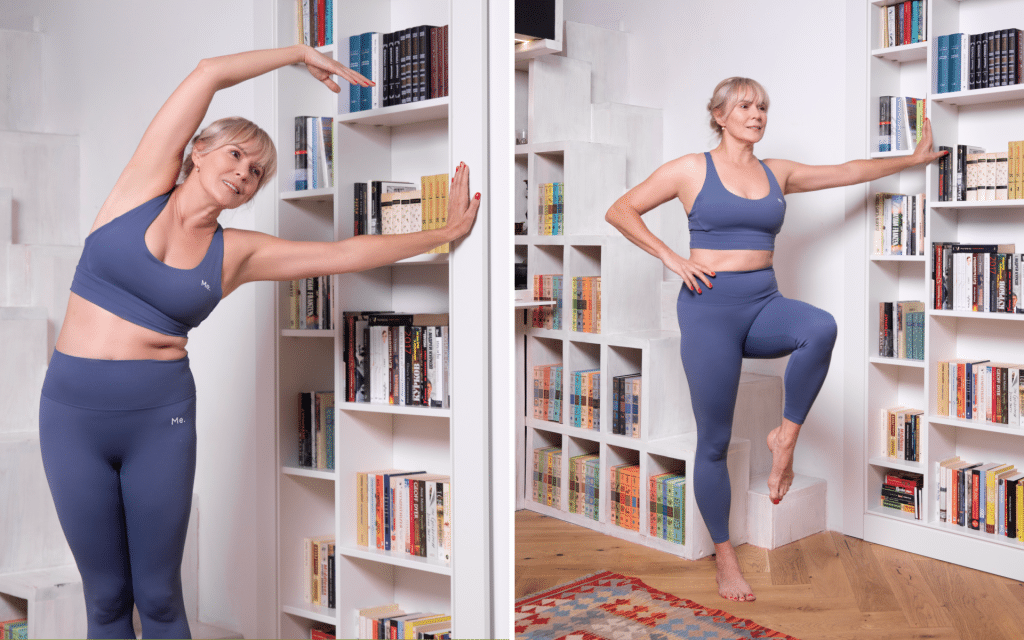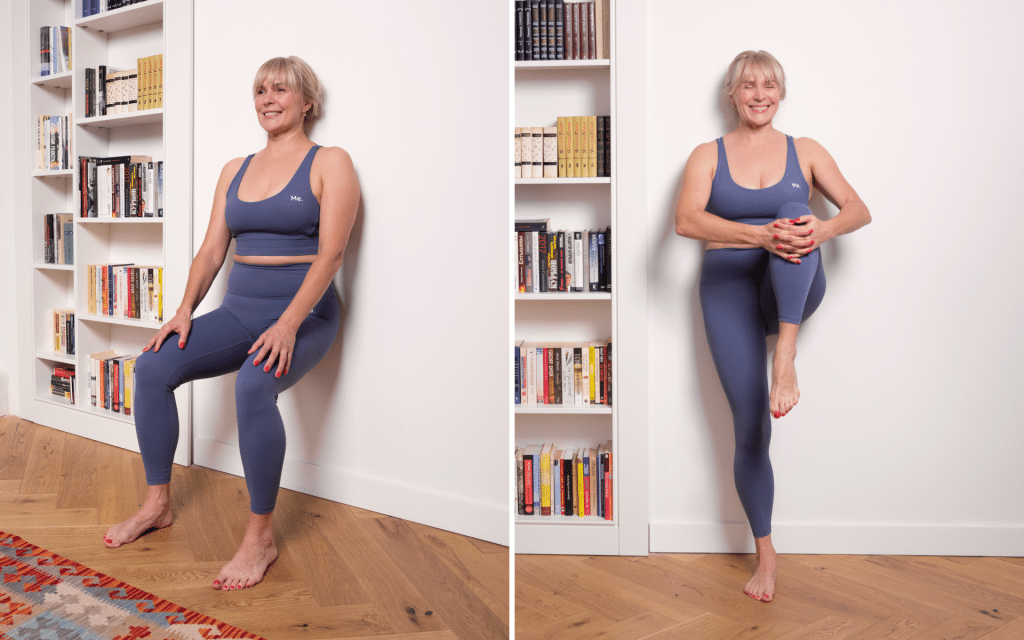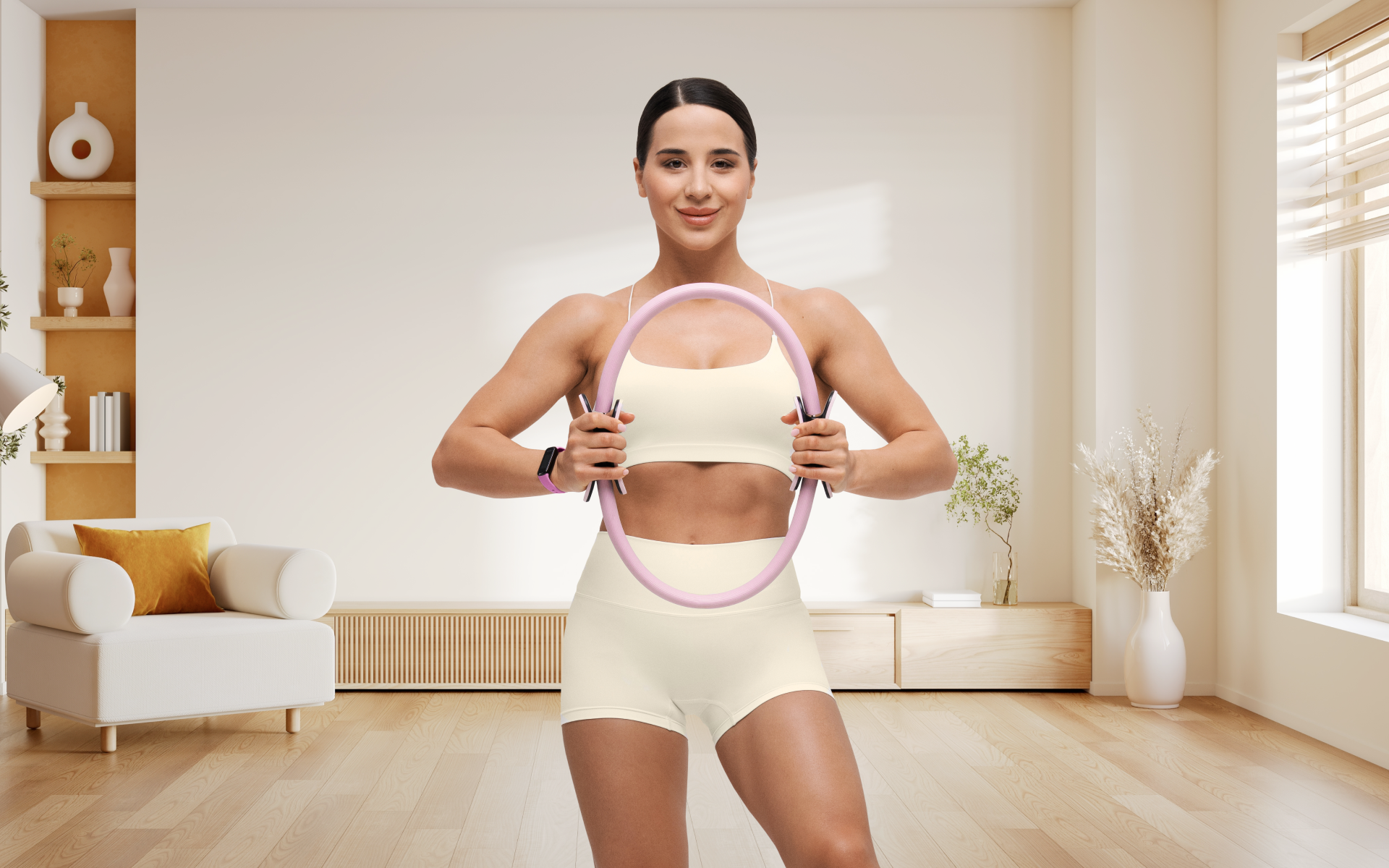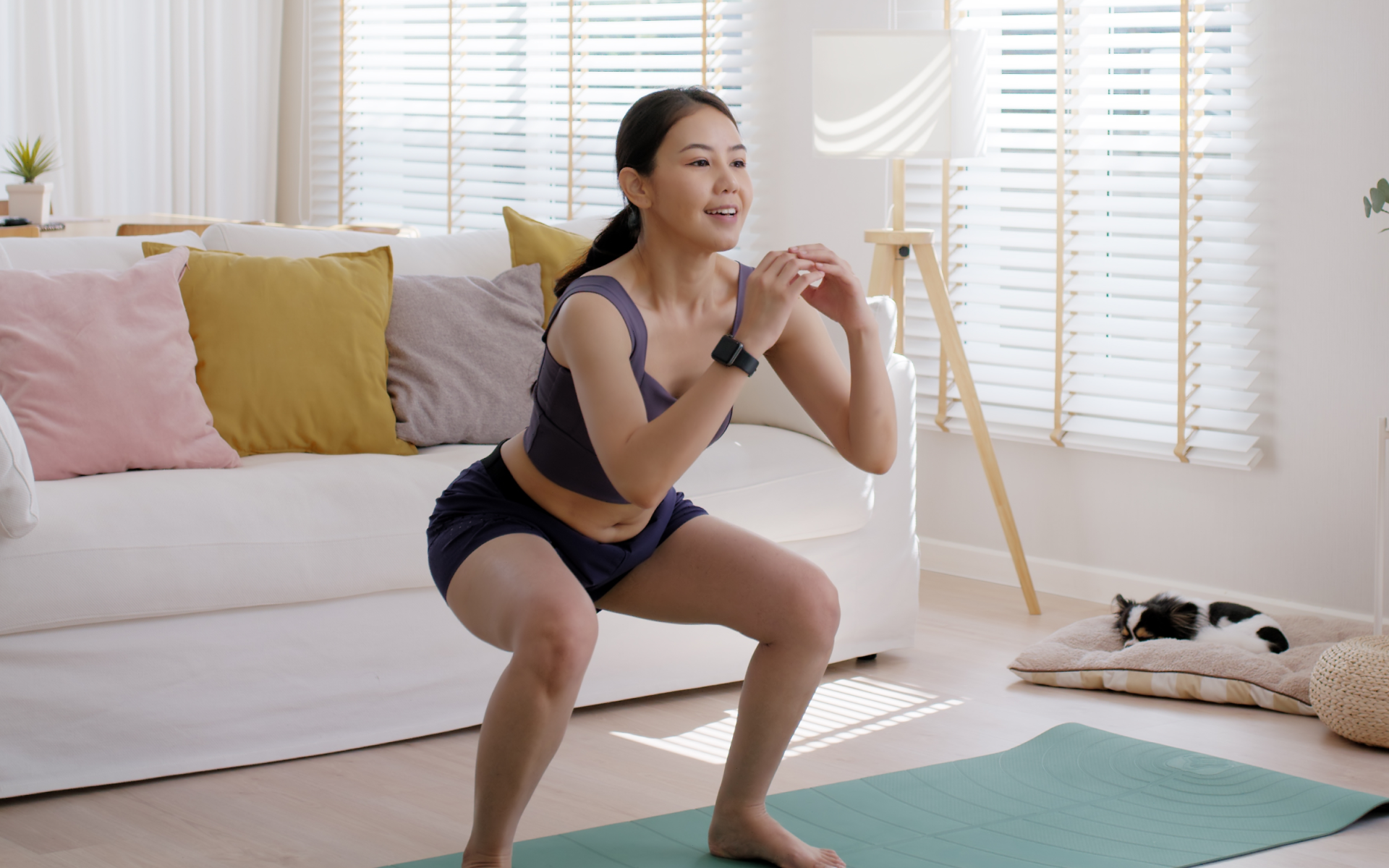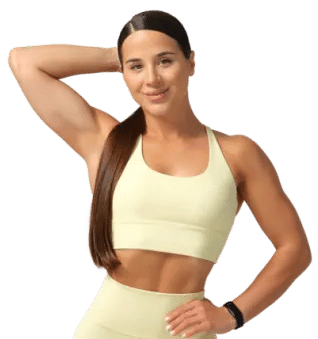Turning 40 isn’t a finish line—it’s a reset button. A moment to pause, take stock, and ask: What does strength look like now?
You’ve probably been wondering how to start getting fit after 40 female body-wise.
For many women, this decade brings new priorities. You’ve built a life, perhaps a career, maybe a family. You’re not interested in unrealistic body goals or keeping up with 20-something fitness trends. What do you want?
- More energy
- Better sleep
- Less joint stiffness
- A body that feels strong, balanced, and capable.
A sustainable workout plan for women over 40 isn’t about punishing your body but supporting it. It means training in ways that respect hormonal changes, support bone health, preserve muscle mass, and help you move well for years to come.
Our guide is for you if you’re ready to move with intention, build real strength, and invest in your long-term wellness. Whether you’re starting fresh or refining what you already do, we’ve built a blueprint that meets you where you are—and evolves with you.
Let’s get into it.
What Is A Workout Plan For Women Over 40?
A workout plan for women over 40 isn’t just about burning calories or dropping a size—it’s about building a body that works for you, not against you.
As your body changes with age—slower metabolism, shifting hormones, a gradual loss of muscle mass—your workouts should change too (1).
What worked in your 20s or 30s might not feel quite right anymore. That’s not failure.
That’s just biology asking for a new strategy.
Here’s what a smart, supportive fitness plan usually includes:
- Strength training 2-3 times weekly to preserve muscle and keep your metabolism active (2).
- Low- to moderate-impact cardio like walking, cycling, or swimming to support heart health (3).
- Mobility and balance exercises (think yoga or Pilates) to improve posture, prevent injury, and stay flexible (4).
- Rest and recovery—your body needs time to rebuild, especially as you train consistently (5).
It’s not about overhauling your life overnight. It’s about building a routine that adapts with you and supports you for the long haul.
Can You Reshape Your Body After 40?
Yes, you can. Full stop. The idea that your body is “set” once you hit 40 is outdated—and honestly, kind of lazy thinking.
Your body is constantly adapting. That’s what it does.
The key is giving it the right signals: practical training, solid nutrition, and consistent recovery. You can lose fat, build muscle, move better, and feel more toned.
Your process may not look like it did in your 20s, and that’s okay. It’s not supposed to.
BetterMe: Health Coaching app helps you achieve your body goals with ease and efficiency by helping to choose proper meal plans and effective workouts. Start using our app and you will see good results in a short time.
What “Reshaping” Really Means
Reshaping your body after 40 is less about shrinking and more about redefining.
It’s about:
- Lowering body fat in a sustainable way
- Adding lean muscle to support your frame
- Improving posture, functional mobility, and strength
- Feeling good in your skin again
You’re not chasing a number on the scale—you’re building a body that works for you now and will continue to work for you as you age. Many experts call this building process body recomposition, and it’s doable in your 40s and beyond.
Read more: The Ultimate 30-Day Muscle Gain Plan for Beginners
Why Strength Training Is Non-Negotiable
Muscle is your best friend after 40. It supports your joints, improves your balance, boosts your metabolism, and changes how your body looks, even at rest (6).
A solid strength training routine (2–3 times a week) can help reshape your body in powerful ways. Compound moves like squats, rows, and pushups recruit multiple muscle groups, making your workouts more efficient.
Don’t worry—this doesn’t mean lifting huge weights or spending hours in the gym.
You can start with resistance bands, light dumbbells, or even your body weight (6).
Nutrition Matters More Than Ever
Reshaping your body after 40 doesn’t mean eating less. It means eating smarter.
Focus on these diet categories (7, 8):
- Lean protein at every meal (chicken, fish, tofu, legumes)
- Healthy fats (avocado, olive oil, nuts)
- Complex carbs (sweet potatoes, oats, quinoa)
- Staying hydrated and watching your alcohol/sugar intake
You don’t need to go keto or count every calorie, but tuning into how food fuels your workouts and supports recovery is a game-changer.
There are countless stories about body transformation after 40 females —and they’re real. These women aren’t chasing perfection.
They prioritize strength, energy, and feeling empowered in their skin. It takes time, yes—but it’s absolutely within reach.
Can You Build Muscle At 40?
Yes—and not only is it possible, it’s one of the best things you can do for your body in your 40s and beyond.
Muscle isn’t just about definition or looking “toned.” It’s about building strength, protecting your joints, supporting your metabolism, and setting your body up for long-term resilience. After 40, the rules change slightly—but the game is far from over.
Why Muscle Matters More Now
Once you hit your 40s, your body naturally loses muscle mass.
It’s a process called sarcopenia, and it can start as early as your mid-thirties (9).
The good news? Muscle loss isn’t irreversible.
With the right strategy, you can slow this decline and reverse it.
Studies show that women over 40 who lift weights regularly experience:
- Better bone density (lowering the risk of fractures later in life) (10)
- Improved insulin sensitivity and metabolic health (11)
- Higher resting calorie burn, thanks to lean muscle (12)
- Stronger joints and reduced risk of injury (13)
This focus is where the weight training over 40 female benefits shine brightly.
How To Start Building Muscle In Your 40s
It doesn’t require gym time or heavy lifting hours to see results. It requires intention.
Here’s what works for building muscle:
- Lift progressively: You need resistance that challenges you—dumbbells, resistance bands, or bodyweight.
The key is progression: increase reps, resistance, or sets over time (2).
- Train consistently: Aim for strength sessions 2-4 times a week.
Focus on compound movements like squats, rows, deadlifts, and presses.
- Prioritize recovery: Your muscles grow when you rest, not while you train.
Make room for recovery days, and get plenty of sleep (5).
- Don’t ignore protein: Your body needs it to rebuild muscle.
Spread protein throughout the day—aim for at least 20–30g per meal (14).
If you’re worried you’ve missed your window, it’s not too late.
Research shows that even women starting resistance training in their 60s or 70s can build significant muscle and strength (15, 16). So at 40? You’re right on time.
Mindset Shift: From Losing To Gaining
A lot of fitness talk for women over 40 centers on weight loss, but building muscle changes that narrative. Instead of shrinking, you’re strengthening.
Instead of chasing a number, you’re gaining power.
Whether you’re doing an over 40 workout plan female at home, or just learning the basics, know this: every rep counts. Your body is capable of more than the media may have told you.
What Is The Best Exercise To Lose Weight After 40?
The best exercise for over 40 female involves strength training, cardiovascular exercise, and flexibility workouts.
- Strength training helps build muscle mass, which can boost metabolism.
- Cardiovascular exercises, such as brisk walking or swimming, aid in burning calories and improving heart health.
- Flexibility exercises like yoga enhance mobility and reduce the risk of injury.
Recommended Exercise Types And Their Benefits
Here’s a table summarizing practical exercises for women over 40 and weight loss for women over 40:
| Exercise Type | Description | Benefits |
|---|---|---|
| Strength Training | Includes weightlifting, resistance bands, or bodyweight exercises | Builds muscle mass, increases metabolism, and strengthens bones (17) |
| Cardiovascular | Activities like brisk walking, cycling, or swimming | Burns calories, improves cardiovascular health, and aids in fat loss (18) |
| Flexibility Training | Yoga or stretching routines | Enhances flexibility, reduces stress, and prevents injuries (19, 20) |
| High-Intensity Interval Training (HIIT) | Short bursts of intense activity followed by rest periods | Efficient calorie burning improves endurance and boosts metabolism (21, 22) |
Incorporating a mix of these exercises into your weekly routine can lead to effective weight loss and overall health improvement.
What Is The Best Workout Plan For Women Over 40?
There’s no perfect one-size-fits-all routine—but the best workout plan for women over 40 is the one that balances strength, cardio, mobility, and most importantly, real life.
At this stage, your body has different needs.
You may not bounce back from workouts the way you used to.
Your hormones, joints, and metabolism are speaking a different language.
The goal now isn’t to push harder—it’s to train smarter.
What should a good weekly plan include?
Here’s what to aim for:
- Strength training 2–3 times a week
This factor is non-negotiable. Resistance exercises help preserve lean muscle, strengthen bones, and boost metabolism.
Focus on big, functional moves like squats, lunges, rows, and presses.
You can use weights, bands, or bodyweight—whatever works for your setup (17).
- Cardio 2–3 times a week
Mix it up with walks, bike rides, dance, or swimming. Keep it moderate—you’re not training for a marathon unless you want to.
Think heart health, energy, and calorie burn (18).
- Mobility and flexibility at least once a week
Yoga, Pilates, or even a guided stretch session can help keep your joints happy, improve posture, and reduce the chance of injury (19, 20).
- Rest and recovery
Don’t skip this part. Sleep is your secret weapon for recovery, hormone balance, and mood. Ensure your workout plan includes lighter or full rest days (5).
If you wish to free yourself from all the extra pounds that have been weighing you down for way too long, start using the BetterMe: Health Coaching app and overhaul your entire life!
Sample Weekly Plan
Here’s how that might look across a week:
- Monday – Upper-body strength training (20–30 mins)
- Tuesday – Brisk walk or cardio dance (30 mins)
- Wednesday – Yoga or active recovery day
- Thursday – Lower-body strength training (20–30 mins)
- Friday – Steady-state cardio (bike, swim, treadmill – 30 mins)
- Saturday – Optional full-body circuit or fun activity like hiking
- Sunday – Rest, stretch, or casual movement like a neighborhood walk
This structure is flexible. Some weeks you’ll do it all, others maybe half—and that’s okay. You’re in this for the long game.
Whether sticking to an at-home workout plan for females over 40 or participating in an over 40 workout plan female at gym free classes-style, the best routine is one you enjoy, can repeat, and feel good doing.
How Many Days A Week Should A 40-Year-Old Woman Workout?
The short answer? 3-5 days a week is a solid sweet spot—but let’s break it down (23).
When you’re over 40, it’s not just about how much you work out but how well you recover. Your body is still strong, still capable, and still adaptive.
However, recovery, hormone balance, and stress management play a much bigger role than they used to (24). Instead of maxing out daily, your focus would be better off shifting towards quality over quantity.
What To Aim For With Workouts:
- 3 days/week: A great starting point for beginners or women easing back into fitness. You can combine full-body strength workouts with light cardio or walking.
- 4–5 days/week: Ideal for building muscle, managing weight, and improving energy levels. Think a mix of strength, cardio, and mobility.
- 6 days/week: Only if your recovery is on point, and your workouts are well-balanced (not high intensity every day). This 6-day plan might look like 3 strength days, 2 light cardio days, and 1 yoga/mobility day.
What About Rest Days?
Yes, you need them. Rest isn’t laziness—it’s part of the plan.
Your muscles repair and grow between workouts, not during them. That’s especially true after 40, when recovery hormones like growth and melatonin naturally decline (25).
If you’re doing strength training, give those muscles 48 hours to recover before training the same group again. That doesn’t mean doing nothing—on rest days, low-intensity movement like walking, stretching, or even a gentle Pilates session can help with circulation and soreness.
Matching It To Your Life
There’s no gold star for working out 7 days a week.
Your ideal number of workouts should fit your energy, schedule, and goals.
If 3 solid workouts are what you can manage in a busy week, that’s still progress.
Fitness over 40 is about sustainability, not punishment.
One week might look different from the next. That’s normal. Your body will respond if you show up consistently over time.
Read more: Wall Pilates for People over 50: 5 Gentle Exercises to Improve Balance and Strength
How Many Calories Does A 40-Year-Old Woman Burn Without Exercise?
Even on your rest days—when you’re not working out, not walking laps, not even leaving the couch—your body is still busy. It’s breathing, pumping blood, digesting food, thinking, repairing, and keeping your temperature steady.
That quiet, behind-the-scenes effort is what burns calories at rest.
It’s called your basal metabolic rate (BMR) (26).
So, how many calories are we talking about?
For most 40-year-old women, BMR typically falls between 1,600 and 1,800 calories daily (26). That’s the energy your body needs to exist, before you add any workouts, chores, steps, or running errands.
But here’s the thing: BMR isn’t the same for everyone.
BMR depends on a few key factors (26):
- Muscle mass: The more muscle you have, the more calories you burn, even when doing nothing. That’s one reason building muscle after 40 females is essential.
- Height and weight: Bigger bodies burn more energy to support basic functions.
- Hormones and age: Metabolism naturally slows down with age, especially if muscle mass drops and estrogen levels shift.
- Sleep, stress, and lifestyle: Poor sleep or high stress can affect your metabolism too (yep, it’s all connected).
Can you increase the number of calories you burn at rest?
Actually—yes. While you can’t completely override biology, you can influence it.
Here’s how:
- Lift weights. Strength training helps you build and maintain lean muscle, which increases your resting metabolism. This calorie burn due to muscle mass is where those weight training sessions pay off (6).
- Move more during the day. Not just workouts—think steps, stretching, walking on the phone, standing instead of sitting. Many fitness experts call this daily movement non-exercise activity thermogenesis (NEAT), which can add up fast (27).
- Support your sleep and stress. Your metabolism likes it when your nervous system isn’t in overdrive. Sleep and rest days help your body recover and reset.
- Eat enough. Surprisingly, under-eating can make your body hold on to energy, slowing your metabolism—nourishment matters.
So no, you don’t need to be in motion to burn calories constantly.
Your body already does that for you. But with the proper habits, you can make your baseline burn work smarter and support your goals.
What Should A 40-Year-Old Woman’s Body Fat Goal Be?
Let’s be real—body fat percentage isn’t just a vanity metric.
It’s one of the most meaningful indicators of overall health, especially as you age.
After 40, your body goes through natural changes. Hormones shift, muscle mass decreases, and fat distribution may change—hello, stubborn belly fat.
But having body fat isn’t the issue. The goal isn’t to have as little as possible.
It’s to have a healthy ratio—enough to support:
- Joint protection
- Energy reserves
- Hormone function
But not so much that it raises your risk for health concerns.
What’s considered a healthy body fat percentage?
For women in their 40s, most experts agree that a body fat percentage between 21% and 33% is considered healthy (28).
Here’s a general breakdown:
- 21–24%: Lean and athletic, often seen in women who train regularly
- 25–29%: Healthy and fit for most active women
- 30–33%: Normal for this age range, especially if lifestyle is more moderate
- Over 33%: Still standard, but may indicate a need to improve metabolic and cardiovascular health, depending on other factors.
However, body fat percentage is just a number:
Two women can weigh the same on the scale, but if one has more muscle and the other has more fat, their body compositions (and how they feel in their bodies) will be completely different.
So, rather than obsessing over weight or an exact number, look at the bigger picture:
- How are your clothes fitting?
- Are you sleeping well and managing stress?
- Are your workouts getting easier?
- Do you feel strong in your daily life?
If you’re a woman over 40 years old and working on weight loss, remember that fat loss doesn’t happen overnight—and that’s a good thing.
Gradual change is more sustainable, and your body will likely hold onto precious muscle as you go.
Measuring body fat percentage (without losing your mind) (29).
You can track body fat percentage using methods like:
- A DEXA scan (gold standard, but pricey)
- Smart scales (useful for trends, not always precise)
- Calipers (more accurate if used by a trained pro)
But again, these tools are just that: tools. They’re not the final word on your health or progress.
If you’re training regularly, eating well, sleeping better, and feeling more at home in your body, you’re doing it right. The scale and body fat percentages are part of the story, but not the whole story.
A 40-year-old woman can get abs with consistent strength training, core-focused workouts, and a clean, calorie-controlled diet. Hormonal changes may slow progress slightly, but visible results are achievable with discipline. With proper strength training, adequate protein intake, and consistent recovery, a 40-year-old woman can build significant muscle definition and achieve a ripped physique—age is not a barrier with the right strategy. Regular brisk walking can help reduce belly fat by increasing calorie burn, improving insulin sensitivity, and lowering overall body fat over time. Combine walking with a nutritious diet to maintain a calorie deficit. Fat loss occurs when the body burns more calories than it consumes. Women over 40 should aim for about 1.2 to 2.0 grams of protein per kilogram of body weight per day to support muscle growth and maintenance, especially when strength training.Frequently Asked Questions
Can a 40 year old woman get abs?
Can a 40 year old woman get ripped?
Can walking reduce belly fat?
How much protein to build muscle after 40?
” mp4=”https://cdn.betterme.world/articles/wp-content/uploads/2025/05/Pilatesseniorwomen2.mp4″]
The Bottom Line
Your 40s aren’t a slowdown—they’re a power-up. Over 40 is the decade to lift heavier, move purposefully, and choose strength over stress.
A well-rounded workout plan for women over 40 isn’t about shrinking—it’s about building: confidence, capability, and a body that supports you.
The scale may not always be the hero in this story, but your energy, posture, and mindset? That’s where the real glow-up happens. You’re not starting over.
You’re starting smarter. And this time, it’s not about quick fixes—it’s about building something that lasts.
DISCLAIMER:
This article is intended for general informational purposes only and does not serve to address individual circumstances. It is not a substitute for professional advice or help and should not be relied on for making any kind of decision-making. Any action taken as a direct or indirect result of the information in this article is entirely at your own risk and is your sole responsibility.
BetterMe, its content staff, and its medical advisors accept no responsibility for inaccuracies, errors, misstatements, inconsistencies, or omissions and specifically disclaim any liability, loss or risk, personal, professional or otherwise, which may be incurred as a consequence, directly or indirectly, of the use and/or application of any content.
You should always seek the advice of your physician or other qualified health provider with any questions you may have regarding a medical condition or your specific situation. Never disregard professional medical advice or delay seeking it because of BetterMe content. If you suspect or think you may have a medical emergency, call your doctor.
SOURCES:
- Metabolic changes in aging humans: current evidence and therapeutic strategies (2022, Journal of Clinical Investigation).
- Resistance training alters body composition in middle-aged women depending on menopause—a 20-week control trial (2023, BMC Women’s Health).
- AHA Recommendations for Physical Activity in Adults (n.d., American Heart Association).
- The Effect of Pilates Based Exercise on Mobility, Postural Stability and Balance in Order to Decrease Fall Risk in Older Adults (2013, ResearchGate).
- Age-Associated Differences in Recovery from Exercise-Induced Muscle Damage (2023, European Review of Aging and Physical Activity).
- How can strength training build healthier bodies as we age? (2023, National Institute on Aging).
- Healthy diet (2020, World Health Organization).
- Healthy Eating Plate (n.d., Harvard T.H. Chan School of Public Health).
- Sarcopenia: origins and clinical relevance (1997, The Journal of Nutrition).
- High-Intensity Resistance and Impact Training Improves Bone Mineral Density and Physical Function in Postmenopausal Women With Osteopenia and Osteoporosis: The LIFTMOR Randomized Controlled Trial (2018, Journal of Bone and Mineral Research).
- Effect of moderate exercise training on peripheral glucose effectiveness, insulin sensitivity, and endogenous glucose production in healthy humans estimated by a two-compartment-labeled minimal model (2004, Diabetes).
- The underappreciated role of muscle in health and disease (2006, The American Journal of Clinical Nutrition).
- The Role of Resistance Training Dosing on Pain and Physical Function in Individuals With Knee Osteoarthritis: A Systematic Review (2019, Sports Health).
- Per meal dose and frequency of protein consumption is associated with lean mass and muscle performance (2016, Clinical Nutrition).
- Growing Stronger: Strength Training for Older Adults (n.d., Centers for Disease Control and Prevention).
- The Intensity and Effects of Strength Training in the Elderly (2011, Progress in Neurobiology).
- The benefits of strength training for older adults (2003, The Journal of Strength and Conditioning Research).
- Cardiovascular Effects and Benefits of Exercise (2018, Annals of Behavioral Medicine).
- Effect of Flexibility Training Associated with Multicomponent Training on Posture and Quality of Movement in Physically Inactive Older Women: A Randomized Study (2021, Journal of Clinical Medicine).
- Effects of stretching on menopausal and depressive symptoms in middle-aged women: a randomized controlled trial (2016, Health and Quality of Life Outcomes).
- Effect of high intensity interval training on body composition in women before and after menopause: A meta-analysis (2020, ResearchGate).
- The impact of high-intensity interval training on women’s health: A bibliometric and visualization analysis (2005, Journal of Applied Physiology).
- How much physical activity do adults need? (n.d., Centers for Disease Control and Prevention).
- Hormonal and metabolic changes of aging and the influence of lifestyle modifications (2021, PMC).
- Neurobiology, pathophysiology, and treatment of melatonin deficiency and dysfunction (2012, Sleep Medicine Reviews).
- A biometric study of human basal metabolism (1918, Proceedings of the National Academy of Sciences).
- Non-Exercise Activity Thermogenesis (NEAT): A component of daily energy expenditure (n.d., Endotext).
- Age and gender specific cut-off points for body fat parameters among adults in Qatar (2020, Nutrition Journal).
- What’s the best way to measure body fat? (2022, British Heart Foundation).
